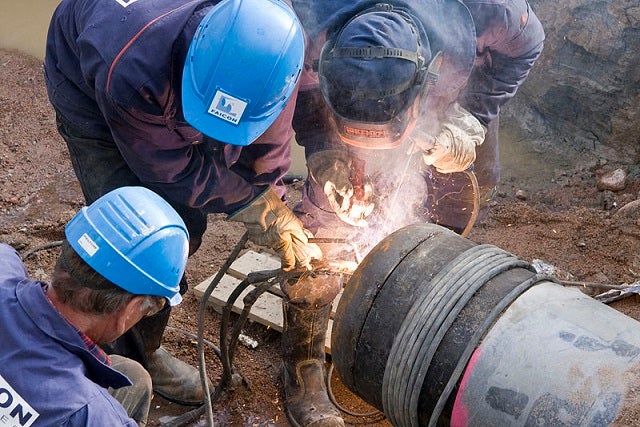In NJ Settlement, EDF Fights to Strengthen the State’s Energy Infrastructure

The recent Energy Strong settlement between New Jersey regulators and Public Service Electric & Gas (PSE&G), the state’s largest utility, should help reinforce vulnerable energy infrastructure ahead of future severe storms. Last month, the Board of Public Utilities (BPU) agreed that customers could fund $1.2 billion in PSE&G improvements to New Jersey’s electric grid to make it more resilient and efficient. As a participant in the case, EDF was encouraged that PSE&G agreed to necessary changes to its grid to protect against more extreme weather events.
PSE&G, which had originally asked for $2.6 billion in storm-related hardening funds, submitted its Energy Strong proposal to regulators in the wake of Superstorm Sandy, which knocked out electricity for a third of homes and businesses in the state for weeks.
The BPU denied EDF and other environmental organizations full intervener status, preventing us from mounting a full case that would have included expert witnesses on proven climate science and the increased likelihood of future superstorms, the pressing need to take aggressive action to make our existing electric and gas distribution grids more resilient, and the need to transition to a smarter, more decentralized energy system. Although our status in the case was limited by the BPU’s decision, we managed to argue for and win some positives for the environment:
- PSE&G agreed to reduce methane emissions by replacing old natural gas mains in areas that have a history of leaks and will collaborate with EDF on a pilot to identify and replace the leakiest pipelines first. New Jersey leads the nation in the amount of old and potentially leaky cast iron pipes – over 5,000 miles in all – and roughly 80% of this is in PSE&G’s service territory. PSE&G owns more than 4,000 miles of old cast iron pipe, the largest amount of any utility in the country. Natural gas is primarily methane, which is a powerful greenhouse gas, many times more potent than carbon dioxide over the short term. Finding and fixing leaks not only makes PSE&G’s natural gas system safer and more resilient, it helps reduce the pollution that is leading to events like Superstorm Sandy.
- PSE&G will invest $100 million in grid modernization, which will produce energy efficiency savings and avoid emissions from gas-fired power plants typically employed to serve this peak demand. PSE&G can save consumers additional money by bidding these energy savings into the region’s wholesale energy market, which pays PSE&G for using energy more efficiently. PSE&G would use these payments to reduce the cost of energy grid modernization improvements. EDF continues to urge PSE&G to bid energy savings into the wholesale energy market and rebate these revenues back to ratepayers.
- Due to the increasing likelihood of extreme weather events caused by climate change, PSE&G agreed to a higher level of flood protection for its substations than it originally proposed (though not as high as we believe it should be) and a performance metric in which no future outages will occur at these substations due to flooding.
EDF will monitor the implementation of this settlement and will continue to look for every opportunity to reduce methane emissions, increase electric and natural gas grid resiliency, and promote policies that accelerate deployment of renewables, energy efficiency, and other market-based approaches.










